| I have been prospecting
and mining for gold both as a hobby and as an occupation for nearly 30 years and in my
opinion it’s a blast! From the deep green forests to the rolling sagebrush hills, few
people see as much of America’s wide open spaces as I do. I kick around kooky little
old towns in the middle of nowhere. I visit historic sites where the pioneers of the west
toiled for years to extract precious metals from the ground. As fun as that is though,
finding your own gold, either as a nugget or in solid hard rock is a special experience
that’s hard to equal.
|
 |
|
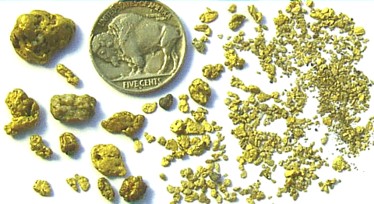 |
School kids in California learn how James Marshall
accidentally discovered gold nuggets while constructing a water powered sawmill in the
Sierra foothills. The excitement resulting from Marshall’s discovery was a fire that
ignited gold and silver rushes all across the western US.
Well known is the story of O’Reiley and McLaughlin who accidentally
discovered the Comstock
Lode silver bonanza while
working a small deposit of placer gold, tossing away a blue-black waste that later turned
out to be rich silver ore. A century ago, Jim Butler, while traveling from his ranch in
central Nevada, noticed some quartz vein material.
Being a good prospector, he collected a sample, but he thought so little of his find that
it sat on his porch for months before it was tested. That sample became the first of many
rich discoveries at Tonopah. I could write a whole book telling the stories of these
individual prospectors who, whether intentionally or by accident, found rich deposits of
gold and other valuable ores. These finds have had no small impact on the development of
our country - historically millions upon millions of ounces of gold have been recovered
from deposits found by individual prospectors.
|
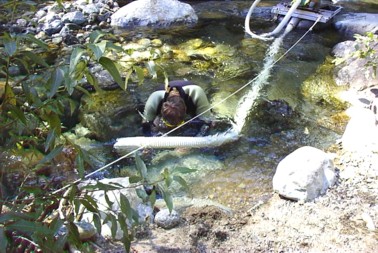 |
| Though every one knows that tons of
gold were recovered by individual miners in the pioneer days, we also know that times have
changed since those rugged single blanket prospectors trod the mountains of the western US
with their gold pans and trusty mules. Most people believe that such rich discoveries are
a thing of the past – the long past. After all, the great finds I mentioned above
were all made 100 or more years ago. Today giant corporations explore all over the world
for gold. What can an individual possibly hope to accomplish prospecting in the present
day? He is competing with multi-national firms that possess millions of dollars in
resources and a staff full of Ph.D. geologists. Most people would believe that surely
today, the individual is at such a disadvantage that there is no chance that he can expect
to find anything. |
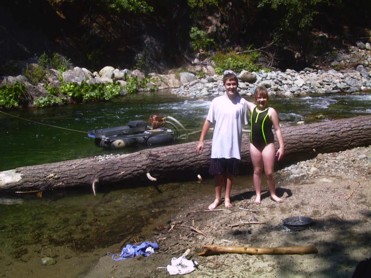 |
| |
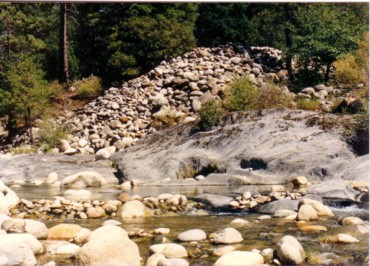 |
You
might easily believe that, but it’s not necessarily true. Just consider the following
bit of history. The most important gold discovery on this planet within the last 100 years
was made in the hills of Nevada north of the small town of Carlin. It lead to the
discovery of a whole new type of gold deposit, one not previously recognized by geologists
or the old time prospectors – the “Carlin type” sedimentary hosted gold
deposit. The old timers could not find it because the gold was too small to see - it
couldn’t be recovered by panning. This unusual discovery has made Nevada one of the
richest gold bearing regions on earth. The Carlin trend district has produced more than 60
million ounces of gold since its discovery in 1961, making it the most productive gold
district in the United States. The first samples of low grade gold ore taken from the
Carlin deposit were made by an individual prospector by the name of Frank Mahoney in the
1950’s. Unfortunately, Mr. Mahoney did not recognize the potential of his find, but
he showed some geologists what he had found, and they did understand the significance of
his discovery. The nearby Rain section of the Carlin trend, located about 8 miles South
east of the town of Carlin, was initially recognized and staked by Price Montrose, a local
independent prospector. In 1979, Mr. Montrose recognized a geologic similarity between
that area and the main Carlin mining areas, which are north west of town. Subsequent
discoveries on the Rain property have produced over one million ounces of gold.
|
|
 |
In the early 1980’s FMC mining
discovered a rich gold deposit at Paradise Peak near Gabbs in central Nevada. The ore body contained over a million
ounces of gold and nearly 40 million ounces of silver. The FMC geologists were initially
led to the area by the husband and wife prospecting team of Bill and Ardith Arnell. The
Arnells had discovered low grade gold mineralization in a wide spread area of altered
volcanic rocks. Further work in that area lead to the discovery of the rich Paradise Peak ore body. So, even though most
of the latest commercial discoveries are being made by professional geologists, a
significant number of finds are still being made by independent prospectors, even among
the large and rich hard rock discoveries of Nevada and most individual prospectors focus
their energy on finding small gold flakes and nuggets. |
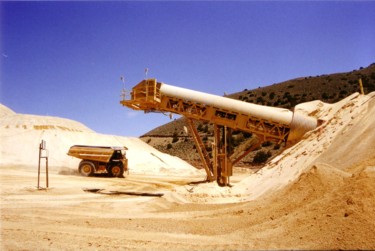 |
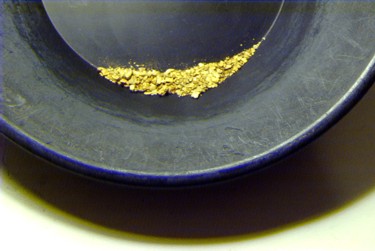 |
The
gold prospecting world is basically divided into two halves. They are placer gold and hard
rock gold. Hard rock is gold, which remains in the original solid rock in which it formed.
Northern Nevada is extremely rich in gold, mostly as these primary hard rock type
deposits. The hard rock, open pit mines of Nevada have produced nearly 100 million ounces
since their discovery in 1960. Although a few small operations still exist, hard rock
mining is usually done on a large scale. The main problem for individuals interested in
hard rock gold deposits is high capital costs for the equipment to crush and process hard
rock ore in order to extract the gold from its solid rock enclosure. Because of this, many
prospectors who look for hard rock gold seek to sell their finds to large companies that
possess the resources to develop them.
|
| Any gold that has
weathered out of its original rock matrix, be it a quartz vein or another source is called
placer gold. Once it is freed from the vein, any accumulation of that gold is called a
placer deposit. There are several different kinds of placers depending on how far the gold
traveled, its origin, etc. The four most common types of placer deposits are: 1) Residual – where the original vein has
weathered, but the placer gold remains more or less "in place" and still within
a few feet of the original source; 2) Eluvial –
where the gold has traveled a short distance down from the source, but has not made it
into streams and other drainages - these are often called hillside placers; 3) Alluvial – Where the gold has made it into
area streams and rivers. These placers are sorted by running water and usually the gold
lies mostly on or near the bedrock; 4) Beach
placers occur where small gold particles make it all the way down river to the ocean. Wave
action can concentrate the heavier fraction of the sand, producing black sand layers
containing fine gold. |
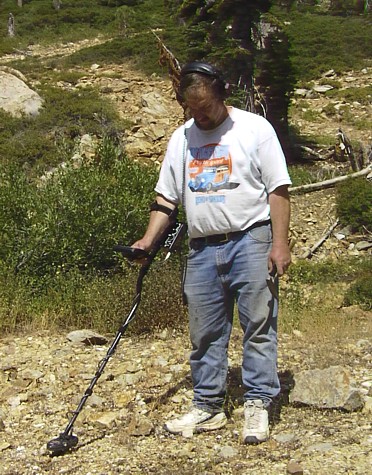 |
|
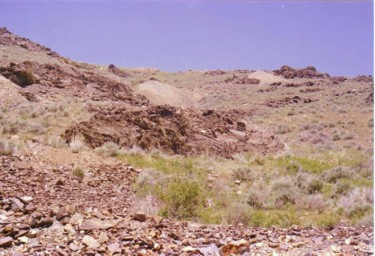 |
Because of the comparative ease of
recovering gold from placer deposits, most individual prospectors start out seeking placer
gold nuggets and flakes. Some later progress to an interest in hard rock deposits, but
most still start out looking for flakes and nuggets of free placer gold. Once you find
your first gold, you won’t have much trouble seeing what kept the old pioneer
prospectors going under such rugged conditions. It’s always great when you come up
with your own gold, and the excitement is real. There is no doubt in my mind that gold
fever is a condition that actually exists. In my experience, staring too closely at gold
nuggets or thinking too much about the quest to find them often causes it. Luckily,
it’s an enjoyable condition with few, if any, harmful side effects. Prospecting for
gold is a hobby that’s easy to fall into. |
| |
| In the deserts, on the hillsides and in
the mountain streams, there is still gold to be found in many places. Every year there are
still great finds being made, mostly in the western states (at least as far as locations
within the USA). Even large nuggets over an ounce in
size are still being recovered – they are not all that common, but they are still
found. Flakes and small chunks of gold are far more common finds. Its not easy, and not
every day will be a home run, especially for the beginner. Patience is required and some
days just have to be chalked up to the quest to gain knowledge and experience. Even for
most of the experienced participants it’s a pastime, and you need to consider the
benefits of other things like good exercise, getting away in the great outdoors along with
the value of the gold recovered. Very few individuals find enough gold to make a
difference in their lifestyle. |
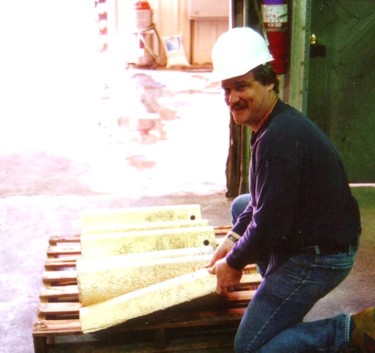 |
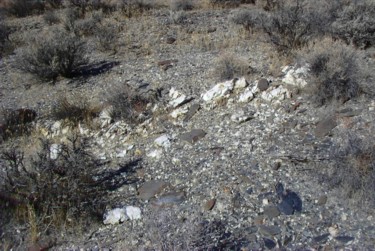 |
It doesn’t necessarily cost a mint
to get into prospecting. It can be as simple as purchasing a gold pan for $10 and grabbing
a bucket and the garden spade from the garage. On the other hand, there are many great
gold saving products available to the modern prospector. Some allow the modern prospector
to accomplish things no old timer could ever dream of.
From metal detectors, to portable suction dredges, to dry placer machines and other
gold recovery devices of all types, many significant improvements have been made in small
scale prospecting equipment. There certainly is no problem finding ways to spend as much
money on good equipment as you would like – lots of great stuff is available. Most
individuals start off small and purchase more advanced equipment as they get more involved
in the hobby.
|
| Although its said that “even a
blind squirrel trips over an acorn once in a while”, there is some knowledge required
to be regularly successful at prospecting. The individual well-armed with a through
knowledge of prospecting techniques, gold geology and placer deposits will tend to find
more gold over the long haul. Learning how and where to find gold is an educational
experience that really never ends. There is always more to learn about gold deposits, and
even the most experienced prospectors find there is always some new and useful information
to be gained. No doubt that it does take some time and effort to “learn the
ropes”, but there are many excellent “how to” books available on operating
various types of gold recovery equipment, including the gold pan, suction dredges, dry
washers, metal detectors, and others. There are also many “gold location” books
that tell where gold has been found and recovered in the past, and what the deposits look
like in those districts. A good basic geology textbook can be helpful in understanding the
geologic conditions a prospector may find in the field. The Mining Journal Magazine
(www.ICMJ.com) publishes a number of good basic reference articles on a variety of
prospecting related topics, and collected over the years, the back issues of the magazine
offer a considerable amount of useful reference information. |
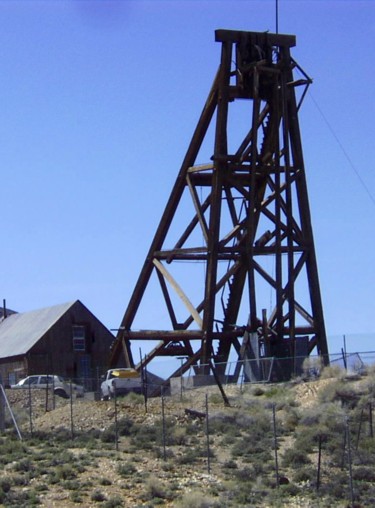 |
Recommended
Metal Detectors:
|
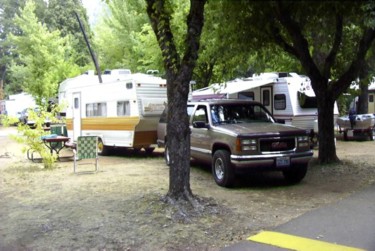 |
Another way to learn more about
prospecting is to join one of the many clubs dedicated to the individual prospector. In
fact, a number of prospecting related clubs advertise right in the ICMJ. One of the
problems that most commonly presents itself to new prospectors is finding a place to
prospect. Most clubs own mining claims, which solve that problem for their club members.
They range in size from very large and nation wide like the GPAA, to regionally oriented
clubs that focus only on a certain part of the country like the Comstock Gold Prospectors
Club. Clubs provide their members not only a place to prospect but also a great
opportunity to meet other prospectors. Many clubs make a special effort to reach out to
new prospectors and help them learn the basics of finding gold. Group outings by the club
can provide the chance to see various types of prospecting equipment in action.
|
|
| . |
One of the most innovative changes now
available to the individual prospector is the information available over the internet. If
you already have a computer, it’s a great way to learn more about gold mining. A
number of web sites and forums dedicated to various aspects of prospecting for gold have
sprung up in recent years. Most of these web sites fall into two broad categories –
web pages and forums. The web pages are sites with specific information and reports on the
experiences of others, sources for prospecting research, and pages for manufacturers and
shops that have useful equipment information. There are even sites with aerial photos that
may be useful in researching places to prospect. The second source is forums where
questions can be asked or topics discussed – most are open to anyone who is
interested. |
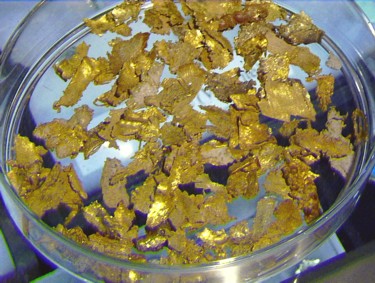 |
|
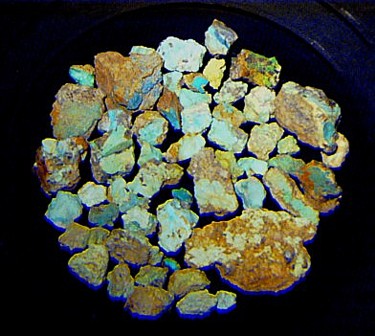 |
These forums offer a very unique chance
for prospectors world wide to converse about their favorite topic. From Australia and New
Zealand, to Alaska and the western states of the “lower 48”, prospectors from
around the globe can now share their insight and knowledge on finding the elusive yellow
metal. Many of the web and forum sites focus on prospecting in certain regions like the Arizona desert or the Rocky Mountain region – you may be able to find
one that specializes in your area. Other sites specialize their focus in a certain type of
prospecting, putting most of their attention on prospecting by metal detecting, and others
giving more of their effort on water related methods like panning and dredging. A simple
way to find the URL address locations for these sites is simply by using a search engine
like Google. |
|
| Many of the sites have links to other
prospecting sites, so explore around and take a look. This is a great way to spend time
during the winter months when the weather doesn’t allow prospecting in the field. So
whether its searching for the next million ounce ore deposit or just finding a small gold
nugget you can call your own, rest assured, it is still possible. For those who enjoy
hunting, hiking, fishing, off road exploring or any of the other many outdoor hobbies so
many folks participate in, prospecting may be something you would be interested in. For
just about any outdoor enthusiast, it’s worthwhile to know a little about gold
deposits – because the next big find may be yours!
|
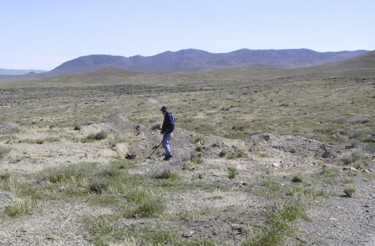 |
|
All Copyrights retained by Chris Ralph, do not copy or reprint without permission
|


















